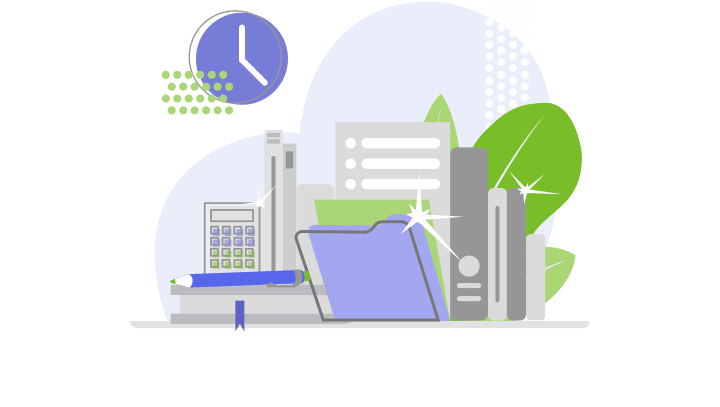How to Determine the Cash Realizable Value in Accounting
Cash Realizable Value is an important metric in accounting as it reflects the company’s ability to collect cash from its customers and accurately represents the true value of its assets. Excluding these non-cash assets from the assessment can result in undervaluing or overlooking critical components of the business. It complicates the accurate financial valuation, potentially leading to flawed investment decisions and strategic planning. The limitations of Cash Realizable Value include its failure to consider future expenses and its inability to account for non-cash assets, which may impact the comprehensive assessment of a company’s true financial worth. The definition of Cash Realizable Value refers to the net amount of cash that a company expects to receive upon the sale or realization of its assets, adhering to accounting principles such as GAAP and IFRS.
AccountingTools
For example, you have net sales of $100,000, accounts receivable of $25,000 and your prior years’ bad debt percentage is four percent. Multiply $100,000 by four percent to get your uncollectable sales amount of $4,000. Subtract $4,000 from $25,000 to get your accounts receivable cash realizable value of $21,000. Therefore, the net realizable value of the inventory is $12,000 (selling price of $14,000 minus $2,000 of costs to dispose of the goods). In that situation the inventory must be reported at the lower of 1) the cost of $15,000, or 2) the NRV of $12,000. In this situation, the inventory should be reported on the balance sheet at $12,000, and the income statement should report a loss of $3,000 due to the write-down of inventory.
These bookkeeping guidelines must be followed before a company can make a legal claim to any profit. The general concept is to factor in the worst-case scenario of a firm’s financial future. In contrast, revenues can only be recorded when they are assured of being received.
The ultimate goal of NRV is to recognize how much proceeds from the sale of inventory or receipt of accounts receivable will actually be received. This relates to the creditworthiness of the clients a business chooses to engage in business with. Companies that prioritize customers with higher credit strength will have higher NRV. Selling inventory is a prime example of assessing Cash Realizable Value, as it involves converting the company’s stock of products into cash, thereby determining the realistic cash worth of the inventory assets.
- Gross A/R represents the total amount that is owed to a company by its customers for goods or services sold on credit.
- Volkswagen disclosed ownership of €43.7 billion of inventory, a very slight decline from the €43.8 billion of inventory carried at the end of December 2020.
- It plays a pivotal role in facilitating meaningful financial analysis, enabling investors, creditors, and management to make well-informed decisions.
- This is the total amount owed to your company by customers for goods or services sold on credit and is the total amount of your outstanding invoices.
Improvement 2: Improving Collection of Accounts Receivable
If the amount of your uncollectable accounts is immaterial, you can write-off that amount as a bad debt expense when it comes due. Under this method, you create a debit memo when there is doubt that a customer will pay the bill. When the amount changes from doubtful to default, the uncollected amount is debited to the Bad Debt Expense account and credited to the Accounts Receivable account.
Future cash realizable value formula expenses, such as upcoming capital investments or restructuring costs, are crucial in evaluating the long-term sustainability of a business, but these are not factored into Cash Realizable Value. The company states that as part of its calculation of inventory, the company wrote-down $592 million. However, it is important to know the steps to follow to make an accurate calculation besides knowing the formula. Listed below is a series of steps that one must consider for a reliable NRV analysis. By aligning supply with demand, businesses can avoid overstocking, which ties up capital and may lead to obsolescence or markdowns.
What is the net realizable value for Inventory?
NRV is the valuation method which is adopted by the firms to ensure they price the assets properly. To calculate, the selling price of the asset is considered and then, the other costs incurred to achieve the sales is subtracted from it. Similarly, when the company collects its accounts receivable, the cash received denotes the realizable worth of those receivables. These transactions directly impact the company’s overall cash realizable worth, providing a clear reflection of the actual cash value of its assets. Cash realizable value reflects the actual cash expected from accounts receivable, providing insight into a company’s liquidity and financial health.
It primarily focuses on the current cash worth of assets, which may not reflect the impact of future financial obligations. When a company sells its inventory, it records the sales revenue and deducts the cost of goods sold. This reveals the net cash received, which portrays the actual value the company realizes from its inventory. In contrast, Market Value considers the price at which the asset could be bought or sold in a current transaction, reflecting the dynamic nature of market conditions and investor sentiment. While these values often align, scenarios may arise where they diverge, such as during economic downturns or when assets have specialized uses, leading to differing assessments of their worth.
Benefits of Calculating the Accounts Receivable NRV
This is not the case under the cash basis of accounting, where a determination of uncollectability does not need to be made in advance of the collection of cash. Instead, the accountant merely writes off a receivable when it is clear that the customer will not pay it (known as the direct write-off method). This means that the receivable balance presented under the accrual basis of accounting is more realistic than one reported under the cash basis of accounting. Depending on how many customers do not pay their bills, this amount could vary significantly from the gross amount.
NRV for accounts receivable is a conservative method of reducing A/R to only the proceeds the company thinks they will get. This was updated in 2015 to where companies must now use the lower of cost or NRV method, which is more consistent with IFRS rules. NRV is a conservative method for valuing assets because it estimates the true amount the seller would receive net of costs if the asset were to be sold. In the Financial year 2019, the market value of Accounts Receivable (which is an asset) for IBM is $10 Bn. This means IBM is expected to receive this amount from customers who have already been recognized as revenue in its accounts.
Another advantage of NRV is its applicability, as the valuation method can often be used across a wide range of inventory items. Often, a company will assess a different NRV for each product line, then aggregate the totals to arrive at a company-wide valuation. Depending on the industry the company is it, the company may decide to accept a certain amount of uncollectable sales. Net Realizable Value of an asset is at which it can be sold after deducting the cost of selling or disposing of the asset. Since in NRV, a firm also considers the cost, hence it is known as a conservative approach to the transaction. Cash Realizable Value is calculated by taking the total amount of accounts receivable and subtracting any allowances for doubtful accounts or discounts.
Each product is then produced separately after the split-off point, and NRV is used to allocate previous joint costs to each of the products. Loosely related to obsolescence, market demand refers to customer preferences, tastes, and other influencing factors. In addition to a good becoming outdated, broad markets may be interested in substitute products, advanced products, or cheaper products. Competition always runs the risk of supplanting a good’s market position, even if both goods are still relevant and highly functioning.
The decrease of cost or market methodology lets firms record losses by writing down the value of the affected stock items. A high NRV indicates that a company expects to collect a significant portion of its receivables, suggesting effective credit policies and collection efforts. A low NRV could imply potential difficulties in collecting receivables, which could impact cash flow and profitability. Incorporating AI into NRV calculations not only makes the process more efficient but also enhances the overall accuracy and reliability of financial reporting. By embracing technological advancements, businesses can stay ahead in an ever-evolving market and ensure their financial practices are robust and forward-thinking. One limitation of Cash Realizable Value is its failure to consider future expenses.
For instance, if inventory sells for $500 and costs $100 to complete and sell, the NRV is $400, reflecting the inventory’s true market value. HighRadius offers a cloud-based Record to Report Suite that helps accounting professionals streamline and automate the financial close process for businesses. We have helped accounting teams from around the globe with month-end closing, reconciliations, journal entry management, intercompany accounting, and financial reporting. Net realizable value is a critical concept in accounting, used to ensure that the value of assets on financial statements is not overstated. Here, we explore the application of NRV in different accounting contexts, including inventory valuation, accounts receivable, and cost accounting.







